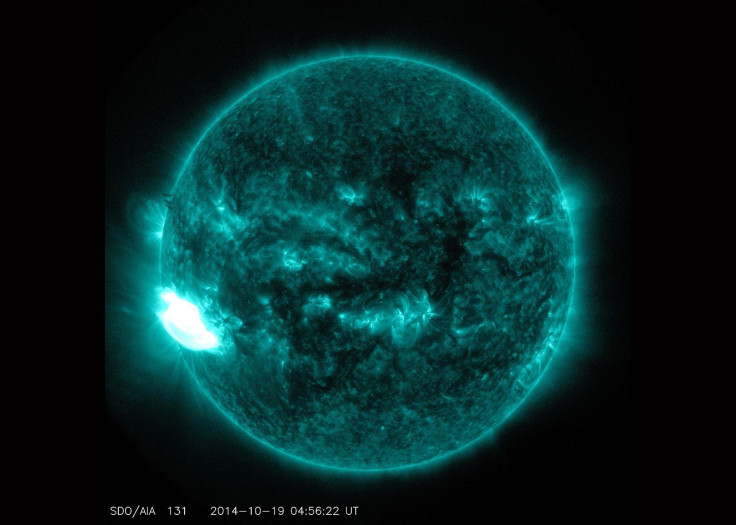NASA Observatory Captures Significant X-Class Solar Flare

NASA’s Solar Dynamics Observatory, or SDO, has captured an image of a significant solar flare emitted by the sun on Sunday. The observatory captured the flare in extreme ultraviolet wavelength to provide details of the flare.
The solar flare, which peaked at 1:01 a.m. EDT on Oct. 19, was classified as an X1.1-class flare -- X-class denotes the most intense solar flares, while the number provides more information about its strength, NASA said, adding that an X2-class flare is twice as intense as an X1, while an X3 is three times as intense.
Solar flares are powerful bursts of radiation observed over the sun’s surface or the solar limb. The flares eject clouds of electrons, ions and atoms through the sun's corona into space. These clouds typically reach Earth a day or two after the event.
Harmful radiation from a flare cannot penetrate Earth's atmosphere to physically affect humans on the ground. However, when the flares are intense enough, they can harm manmade satellites and thus affect onground global positioning systems and communications signals.
On Sept. 30, the SDO captured images of a giant rope-like, extended filament of solar material on the sun. According to NASA, the filament is so long that if it were straightened out, it would reach almost across the whole sun -- about 1 million miles in length.
Earlier this month, the SDO also captured images of a mid-level solar flare, which was classified as an M7.3 flare. An M-class flare is only one-tenth as powerful as the most powerful X-class flares.
On July 23, 2012, a massive and potentially damaging solar superstorm, including solar flares and a coronal mass ejection, barely missed Earth. NASA estimates that there is a 12 percent chance of a similar event occurring between 2012 and 2022.
© Copyright IBTimes 2025. All rights reserved.






















